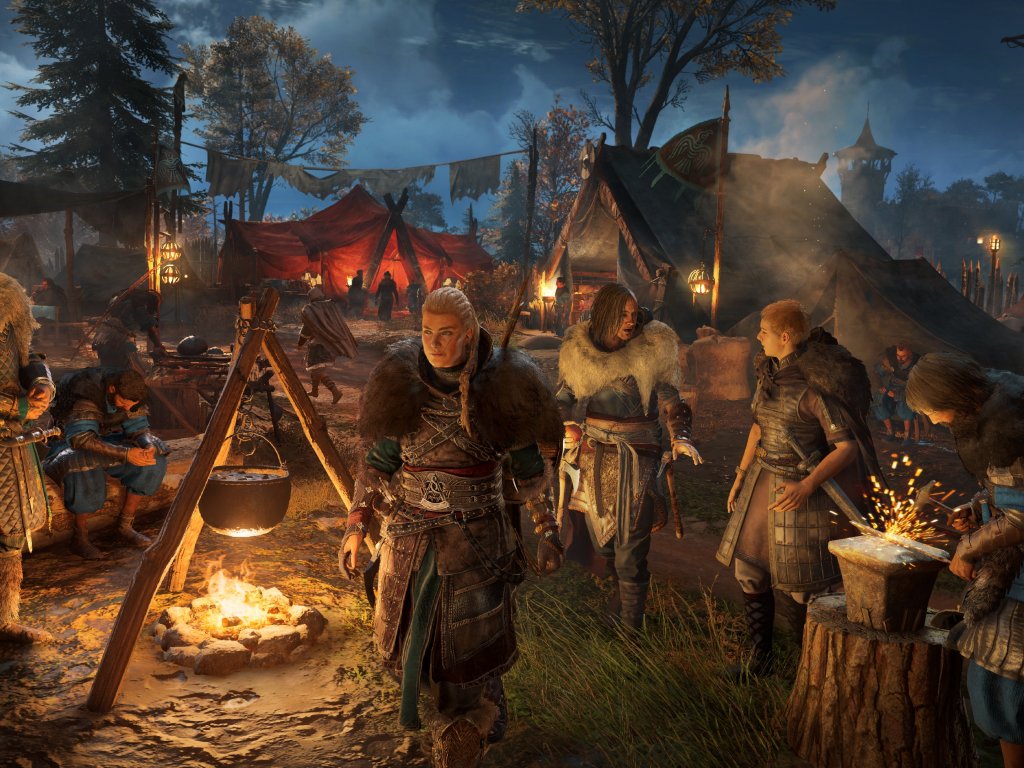Assassin’s Creed Valhalla, guide to the Orlog game

The new chapter of Assassin's Creed offers several minigames scattered across the lands of England, including a very interesting dice game: Orlog. Let's try to understand the mechanics and the most effective strategies in this guide to the game of the Orlog of Assassin's Creed Valhalla.
What is the Orlog
The Orlog is a game of dice based on the strategy, the cunning and even the luck of the players.Designed as a sort of battlefield, the game table is divided into two areas, one for each player.
The first to roll the dice is chosen by a simple toss of the coin (heads or tails). Once you have rolled the six dice, you have the possibility to choose how many we want to keep and how many we want to raise. In all, there are three raises available, in turn with the other player.
Divided into three phases (the roll of the dice, the divine favors and the resolution of the battlefield), the objective is defeat the enemy commander, that is the other player, by taking away all his life (marked by fifteen small stones placed next to the playing field).
Borrowing a little from different games, both of cards and dice, Orlog is a fast and interesting pastime that, if you like the genre, will take several hours of play away.
The dice of the Orlog
The faces of the dice are divided into axes (melee attack), arrows (ranged attack), armor (defense against ranged attacks), shields (defense against ranged attacks) and hands (possibility of stealing divine favors from the opponent).Additionally, some faces will feature a gold frame. The latter means that you will be given a token to spend on divine favors at the time of resolution.
Divine favors
During the game, you will be given the opportunity to invoke favors divine. These are basically extremely effective powers that will help you defeat your opponent in less time.Depending on the god you ask for help (which you unlock by defeating other players or exploring the game world), you will have different options, more and more expensive based on the strength of the effect.
You will start with a simple instant attack, which will allow you to inflict two, five or eight damage on your opponent for a cost of four, eight or twelve tokens .
By unlocking new divine favors, you can choose up to three deities to bring into battle, depending on the strategy you intend to use.
The resolution
Once the divine favors, it's time to calculate the damage inflicted during the turn.First of all, the tokens useful for divine favors are assigned. Then, the dice played by the two players are associated not according to their stake, but according to their nature. Hence, axes are associated with armor and arrows with shields. If a player has played, for example, three axes and the opponent only two shields, damage will be inflicted on the latter's life. Same goes for arrows and shields.
Once the damage has been calculated, we move on to stealing the tokens for divine favors, if someone has played that side of the dice. Once this procedure is completed, the effects of divine favors are applied, but only on condition that you still have the amount requested during the invocation (if you have fewer tokens, perhaps because they were stolen during the resolution, the divine favor will not be invoked).
Our advice
The game of Orlog, at least at the beginning, is not extremely difficult, but it can get more and more complicated as you meet new players.You certainly don't need advice, but we still want to show you our strategy and give you some tips, especially for those who are just starting to approach it.
If you have more faces with tokens for favors divine associates, play them immediately. Having tokens at will certainly doesn't hurt and they will certainly come in handy in the final stages of the game. If you are the first to roll, always play only one die (the choice of the face must coincide with the style of play you prefer pursue), unless you have more than one providing tokens for divine favors. This way you will be able to see the opponent's counter move and act accordingly using a greater number of dice. If you place the cursor on one of the dice, a pop-up will open showing all the faces of that die. This process is extremely useful for understanding which face the tokens for divine favors are associated with (they change for each die) and, possibly, if it is convenient to roll again or to proceed with what has been released. Play the "steal" face as many times as you can. This will allow you to keep your opponent's supplies low and prevent him from defeating you with a tail swipe right at the end. Obviously, if he has no tokens, there's no point in stealing, so pay close attention to his supplies and how much he will get during the turn.
This is, in broad terms, the game of Orlog and how it works.
The game mechanics are explained quite thoroughly in the game, but to be honest we wanted to find just a pretext to know your strategies and apply them during our games, as we know that among you already lurk potential champions of one of the most addictive minigames of Assassin's Creed Valhalla.